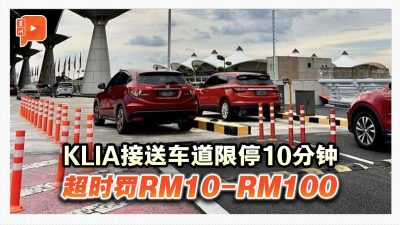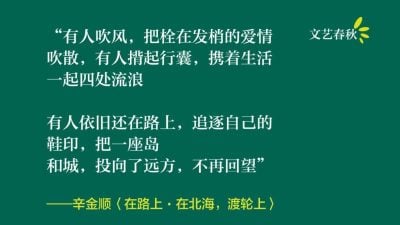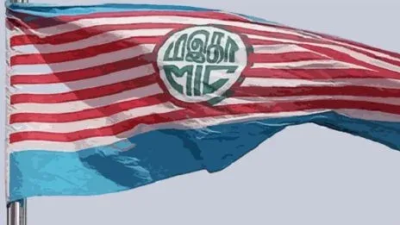
While in transit from Fiji to Malaysia, I was struck by the ambience and vibrancy of Changi Airport, proudly boasting its renowned reputation as the best airport in the world.
It is truly enchanting. I watched children joyfully running around while their mothers chatted over coffee.
Business executives hurried to catch flights, pausing to grab a coffee or pastry from the numerous famous cafes scattered throughout.
The restrooms were impeccably clean and functional, with no foreign worker diligently mopping the floor.
Changi Airport in Singapore shines as a beacon of modern travel, while Kuala Lumpur International Airport (KLIA) stands in stark contrast.
Once hailed as a state-of-the-art facility, KLIA now grapples with a range of issues that detract from the overall traveller experience.
As a traveller, I have no inspiration to shop nor dine as what they offer are both hopeless and unpalatable!
I would say KLIA2 is somewhat more delectable indeed.
Prior to looking into the issues of promotion or even coming close to Changi international Airport, let us look into the issues KLIA is facing:
■ Ageing infrastructure
KLIA, opened in 1998, has not seen the level of modernisation that other leading airports have undergone.
China’s Guangzhou Baiyun International airport, India’s Kempegowda International Airport Bengaluru, Thailand’s Suvarnabhumi Airport, and Indonesia’s Soekarno-Hatta International Airport Jakarta are the new and upgraded airports that look far better and friendlier compared to our ageing KLIA.
The once-impressive terminal now shows signs of wear and tear, with outdated facilities and aesthetics that feel uninspiring, including its lighting, train, trolleys, and toilets.
Despite the toilets having been upgraded recently, there is still much improvement to look into.
■ Limited retail and dining options
Unlike Changi’s diverse selection of shops and restaurants, KLIA offers a more limited range.
Travellers often find themselves facing repetitive choices — chocolates, liquor and cigarettes. This is particularly disappointing for travellers experiencing long layovers.
Are the investors of other merchandise unattracted to the rates offered? Is the turnover or gains of investment in opening stores in KLIA unimpressive?
With the number of tourists, especially from Asia, flocking in, it is a wonder why sales have not been given a boost.
Perhaps the blame could be directed to lack of marketing and promotion?
■ Inadequate amenities
While Changi is known for its family-friendly activities and workspaces for business travellers, KLIA boasts the opposite.
Families struggle to find engaging activities for children, and business travellers often search in vain for quiet, productive environments.
The seats do not have charging pods for passengers to charge their devices while waiting to board their flights.
There is nothing attractive or glitzy; no mini landscape of representation of our lush greenery or beauty; no exhibits boasting the unique diverse culture of our people or lifestyle.
Our once much talked-about airport is now a dull building, much to our nation’s dismay.
■ Cleanliness and maintenance
The level of cleanliness at KLIA does not consistently meet the expectations set by its competitors.
Travellers have reported issues with restrooms and common areas, which detract from the overall ambience.
The condition of the toilets has improved, but the lightings are still dingy.
The travelators are stained, the atmosphere is dull. In general, KLIA is in need of refurbishment and new décor for its worn-out and tired-looking state.
The once-impressive terminal now shows signs of wear and tear, with outdated facilities and aesthetics that feel uninspiring.
Learning from neighbours
KLIA can look to Changi for inspiration on several fronts:
■ Modernisation and upgrades
Perform regular updates to infrastructure can help maintain a contemporary feel.
This includes investing in better signage (the current ones are very stale and pale, and you have to look upwards to read them):
– Redesign the seating arrangements, and overall design and décor to enhance the travel experience;
– Continuously create a “wow” factor in the living and waiting areas, and upgrade the types of seats and carpeting to create a more attractive and exciting feeling among travellers.
■ Diverse retail and dining experiences
– Expand the range of shops and restaurants to include local and international brands to cater to a wider audience;
– Incorporate unique Malaysian cuisine alongside popular international options to enrich the dining experience;
– Food courts with an array of our local dishes could be an attraction, but it must be noticeable and reachable by busy travellers instead of being hidden in a little corner;
– Consider if a simple teh tarik and roti canai served on nice tables with comfortable chairs around it would add value to the travellers; would a fried kuey teow hawker at the departure halls be an attraction?
■ Enhanced amenities for travellers
– Create dedicated play areas for children, comfortable workspaces with charging stations, and lounges designed for relaxation to attract families and business travellers alike.
■ Emphasis on cleanliness and maintenance
– Set up a robust cleaning protocol and regular maintenance checks to significantly improve travellers’ perceptions;
– Invest in staff training and resources to ensure a consistently high standard of cleanliness.
■ More information booths
– Design more information booths to ensure the travellers are guided and pampered especially if they are lost;
– Train the counter staff in order to be fluent in English; his/her knowledge in all aspects that travellers may need help with or need to know must be up to date and precise.
■ Airport police
– Ensure that the police officers assigned at the airport are well-trained and fluent in English, and are able to guide the travellers correctly and professionally whenever their assistance is needed.
Proposed strategies for revitalisation
■ Renovation projects
Initiate a phased renovation plan that targets key areas in the airport.
Upgrade terminals with modern aesthetics, better lighting, and efficient layouts can improve traveller flow and satisfaction.
■ Partnerships with local brands
Collaborate with Malaysian brands to create pop-up shops and eateries that showcase local culture, adding a unique touch to the travel experience.
■ Family and business amenities
Develop family zones with play areas and child-friendly facilities, as well as business lounges with high-speed internet and workstations to cater to the diverse needs of travellers.
■ Marketing and outreach
Implement marketing campaigns that promote KLIA’s unique offerings, targeting both domestic and international travellers to shift perceptions and draw in more visitors.
KLIA, once a proud symbol of Malaysia’s commitment to aviation, now faces challenges that require urgent attention.
By taking cues from the successful practices of Changi Airport or even Suvarnabhumi Airport, and addressing its key issues, KLIA can revitalise its image and experience, transforming from a “white elephant” back into a thriving hub of modern travel.
With strategic investments and a focus on customer experience, KLIA can reclaim its status among the best airports in the region.
It needs to get back into shape right away.

(Ravindran Raman Kutty is an active social worker.)
ADVERTISEMENT
ADVERTISEMENT








































